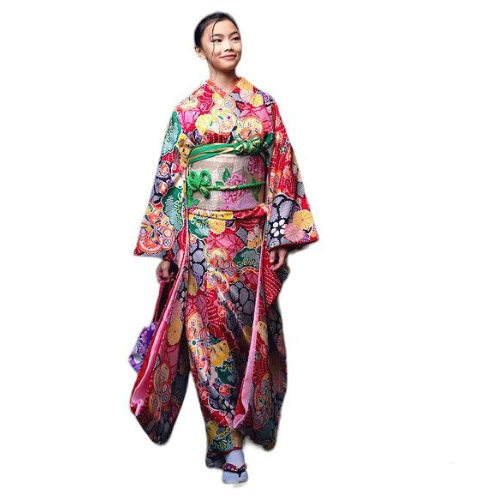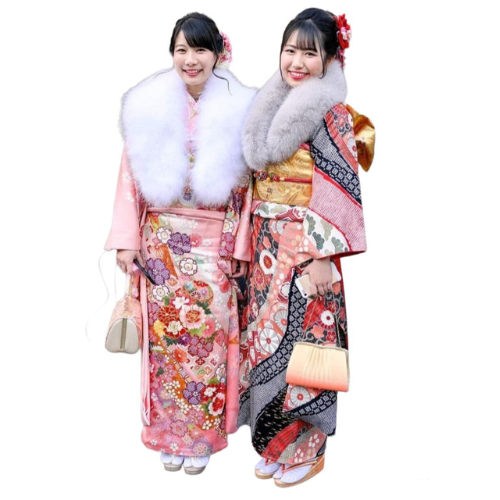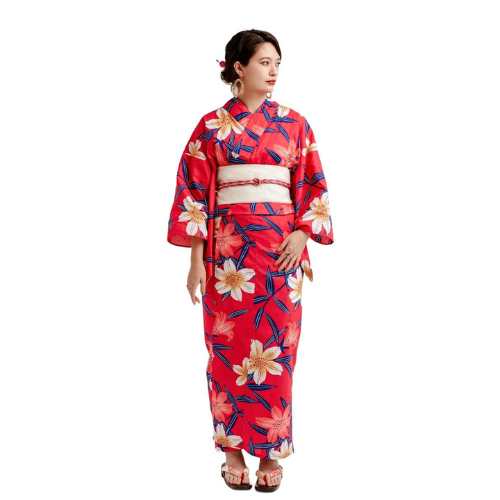Last Sunday I went to the museum with my friend, where I saw a variety of dresses, that people still wear to this day.
Apart from Abayas, Tunics, I found some really unique robe like dress that seemed like the maker had put in a lot of attention to detail when it comes to the quality.
As soon as I got home later that night I looked up on the internet by using the descriptions. Turns out, we were looking at the infamous Japanese Kimono.
It seemed fascinating to me that this popular dress just slipped my sight and that I have little to no information on the same, which is why I decided to gather some information and put all of it into an article.
for those who want a brief explanation of a Kimono:
What is a Kimono?
The name of the robe like garment that the japanese men and women started wearing in the hakuho period (645-710) is Kimono. People still wear them these days under special occasions. The essential kimono, derived from the Chinese style robe, is an ankle-length gown with long, expansive sleeves and a V-neck. It has no buttons or ties and is lapped left over right across the chest and secured at the waist by a broad sash known as an obi.
Kimonos are traditional Japanese garments and Japan’s national dress. Unless the wearer is deceased, the kimono is a wrapped-front garment with square sleeves and a rectangular body that is worn left side and wrapped over the right. The kimono is traditionally worn with a broad sash called an obi and is commonly paired with zari sandals and tabi socks.
Now the ones who want to dive deeper into the subject can read on
We will be going over the following topics:
1: The Origin of Kiminos
2: Who wears Kimonos?
3: Where should we wear Kimonos?
4: How should we wear the Kimono?
5: When Should we wear the Kimono?
6: The types of Kimonos
1: The origin of Kimonos
Let us look into the history of the kimono. The garments people wore in China during the Wu dynasty inspired the Japanese kimono, or “gofuku”. The Japanese established their style of layering silk robes from around 6th to 11th cennturies. The name of the first-layer garment that people traditionally wear beneath all the robes is kosode.
The kimono’s ancestor was born during the Heian period (794-1192). The garment that people sew together using stright fabric cuts are to fit every body shape. It was simple to put on and infinitely adaptable. It had evolved into a unisex outer garment known as kosode by the Edo period (1603-1868). The kosode, which means “small sleeves,” was distinguished by smaller armholes. Only after the Meiji period (1868-1912) was the garment referred to as kimono. This most recent transition, from the Edo period to modern Japan, is fascinating.
2: Who wears Kimonos?
Traditional Japanese clothing, known as kimono, and variations such as yukata, were once commonplace in Japan. The word kimono translates to “worn item,” i.e., clothing! Today, the range of clothing people wear in Japan has also changed, and they rarely wear the slightly more cumbersome kimono in public. But that doesn’t mean that kimono and yukata have been lost to the sands of time! Traditional Japanese clothing, such as kimonos, remains an important part of Japanese culture, particularly for special occasions. Continue reading to learn everything there is to know about Japanese kimono culture.
3: Where should we wear Kimonos?
The kimono is one of Japan’s symbols. This type of traditional Japanese clothing dates back to the fifth century and hasn’t changed much since then. It is essentially a T-shaped robe with no buttons that is fastened to the body with an obi belt.
The cut and principle of wearing Japan’s national dress are straightforward, but the richness of materials and the depth of meaning of the patterns are striking. In this article, we will learn about the history of Japanese kimonos, why they are experiencing a revival today, what types there are, and how to tie the obi belt.
4: How should we wear the Kimono?
If you want to wear a kimono or yukata, adjust the length so it sits above your ankles, ties your waist tightly, and smooth out the torso to look great today.
this is the steps
1: Wear form-fitting clothes as a base layer.
2: Slip your arms through the sleeves of the kimono.
3: Lift the kimono fabric until the bottom is just above your ankles.
4: Wrap the fabric pieces around your hips, left on top of right.
5: Wrap the koshi himo belt around the bunched up fabric.
6: Tie the koshi himo belt in a bow on your right hip.
7: Pull the fabric down from the neck of the kimono with your hands.
8: Hold the front collar with one hand and pull the kimono neck back with the other.
9: Make a bow with the second koshi himo belt beneath your bust.
10: Adjust the back of your kimono until it is no longer bunching up.
11: Tie an obi around your waist to complete the look. Wrap it twice underneath your bust line and tie it in the front.
If you are wondering what an obi is, then here is the explanation:
The obi is the kimono’s larger outer sash or belt that people tie around the waist. It is the primary accessory that complements the kimono and comes in a variety of styles and materials. Maru and Fukuro obi is more formal styles, with metallic threads and intricate embroidery. Nagoya obi were created as obi of convenience. They come with one end partially sewn together to make tying easier. Hanhaba obi are half-width obi that people typically wear with yukata or casual types of kimono and do not require any additional accessories.
5: When Should Kimonos Be Worn?
As with any other piece of clothing, there is a kimono for every season and occasion. The material, colour, pattern, and selected details determine the differences.
6: The types of Kimonos
Let’s break down what Japanese women wear and what they pay attention to at different times of the year.
summer:

The kimono in the photograph is made of thin silk fabric. Translucent materials provide a sense of coolness and freshness, which is particularly useful in hot weather. The design features an inflorescence of autumn grasses on a soft blue background. What, if it’s still summer, do fall grasses have to do with it? It is considered good form in Japanese culture to be a little ahead of the curve and make references to the upcoming season.
Autumn :(fall)

As the weather cools, it’s time for a double-layered a vase. It’s especially fashionable to select a fabric in juicy hues that complement the vibrant autumn scenery.
A wool kimono is shown here. A kimono with a repeating pattern is known as a kimono. It is appropriate for everyday use, such as going for a walk with friends or going to an exhibition, and with the right elements in it, you can go to the theatre and visit.
Winter :

Winter kimonos are all lined. In areas with a lot of snow in the winter, people sew an extra layer of cotton between the two layers of silk.
The image shows an elegant furisode with long sleeves. On solemn occasions, unmarried girls wear such outfits., is depicted on the fabric A crane, a traditional Japanese symbol of longevity.
Spring :

Spring tsukesage is a wardrobe staple for any self-respecting Japanese woman. It is the season for graduation and the solemn beginning of the school year. It also when the Shinto festivals take place, here is where people usually wear traditional japanese attire such as Kimonos.
If you are looking to get Women’s Apparel in wholesale such as Abayas/Burqas, Jalabiyas, Kaftans, Kandooras, Cardigans, Kurtis, Skirts, Tunics, Pants, Dupattas, Shawls, Skirts, Jackets, designer gowns, nightdresses etc, then you could get in touch with our team: [email protected]
We are a wholesale manufacturer of Women’s Apparels, we supply clothing to Middle Eastern, North American, Europenan and Asian countries.
Read more
Check out our shop by clicking here
Follow our social media pages to stay updated with the latest trends:
Official Birbaboti’s Facebook Page,
Birbaboti’s Events Group on Facebook (Women For Tomorrow), and
Click here for Birbaboti’s Instagram Page
Read more articles from us by clicking here





